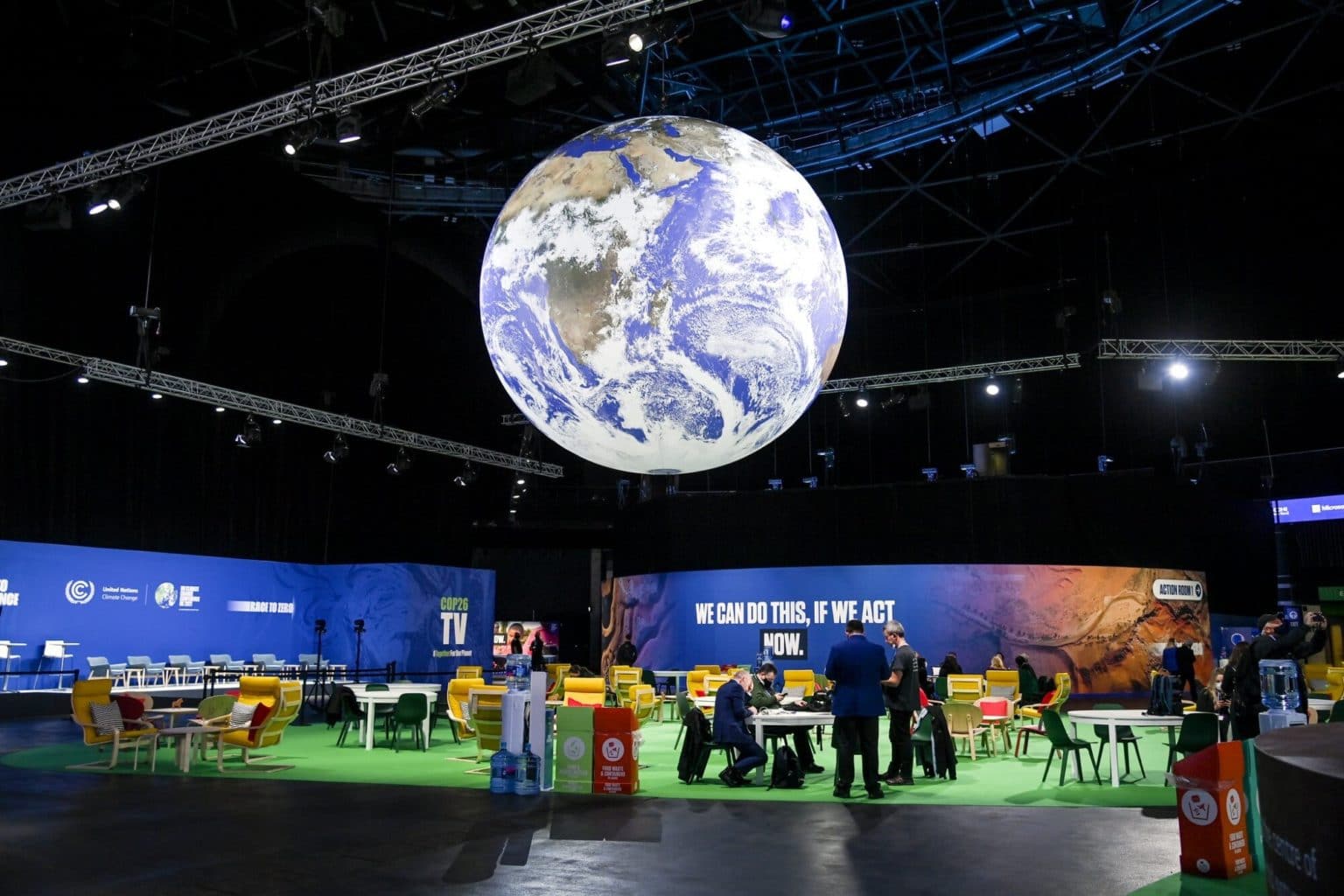What happened at COP26?
Between the 31st October and 12th November 2021, the UK hosted the 26th UN Climate Change Conference of the Parties (COP26) in Glasgow.
CARE colleagues and spokespeople from our global offices attended the conference in Glasgow, because the global climate crisis threatens CARE’s vision of a world of hope, inclusion, and social justice – a world where poverty has been overcome and people live in dignity and security.
But was there any progress on our demands?
Finance for climate justice
CARE asked that developed countries put forward a delivery plan for their climate finance commitment which proved that – on average – at least USD$100 billion would be delivered each year between 2020-2025, with 50% going to adaptation.
In the week before COP a delivery plan was presented conceding that the USD$100 billion goal would not be achieved until 2023, with CARE experts saying publicly that it was “shameful that rich countries are only now – one week before COP26 – trying to explain how they intend to try to make good on a commitment they have known about for 12 years.”
During COP26 countries acknowledged the failure to meet the target and the “urgent” need to deliver on these funds. There was also a commitment to double finance for adaptation to climate change by 2025. However there is still a lot of work to be done in 2022 on ensuring delivery of these new funds, as well as a roadmap for how the finance will reach those most impacted by climate change.

Gender justice
CARE believes that women are agents of change who should have a central role in climate change mitigation and adaptation. This necessitates increased access to resources and decision-making. We called for parties to accelerate implementation of the Gender Action Plan (GAP), which was agreed at COP25.
During COP, CARE experts tentatively welcomed Gender Day commitments from the UK, Canada and the US. There was recognition that gender should be better integrated into countries’ climate action plans (also known as Nationally Determined Contributions, or NDCs) and the need for a more explicit focus on finance that is gender responsive. In 2022, CARE will continue to call for finance for women-led and womens’ rights organizations and implementation of the GAP.
Keeping 1.5 alive
Every fraction of a degree matters for those on the frontline of the climate emergency! And one of CARE’s key demands for COP26 was for more ambition from countries in reducing their emissions. We also wanted the end of financing for fossil fuels to be in sight, and an agreement on carbon trading – which is about the way countries and businesses achieve ‘net-zero’ – that protected environmental and social integrity.
There were some incremental steps on mitigation at COP26. The need to reduce emissions by 45% by 2030 was acknowledged, as was the size of the existing emissions gap. For the first time in 30 years, fossil fuels were mentioned in the agreement with the need to “phasedown” coal. 32 countries also pledged to halt fossil fuel financing and a carbon trading agreement was made. Most importantly, countries agreed to the request to revisit their 2030 emission reduction targets, and whether they are in line with the 1.5°C target, by the end of 2022. This means that the big countries in particular need to go back and figure out ways to further increase their ambition. All in all, the COP26 package did respond to the IPCC code red warning and kept 1.5 alive — but barely, and delivery on these pledges is critical.
Gender-transformative adaptation
Climate impacted communities are already experiencing the worst effects of climate change, and there is a need for men and women to have access to resources and finances that enable them to adapt to their changing circumstances. Ahead of this COP, CARE called for National Adaptation Plans to be more inclusive and recognize the role of gender.
Positively, the Glasgow Climate Pact encourages “Parties to increase the full, meaningful and equal participation of women in climate action and to ensure gender-responsive implementation and means of implementation”, a clear call to better integrate gender also across adaptation action. At COP26 a 2 year new work programme on Global Goal on adaptation was also adopted, and the Adaptation Fund raised a record $356m in new pledges. There was a commitment to double funding for adaptation by 2025, amounting to at least $40 bn and parties were urged to better integrate climate adaptation into local, national and regional planning.
The finance committed however is a drop in the ocean compared to what is needed by the millions of people who are having to adapt their livelihoods and communities because of the devastating impacts of climate change. In 2022 CARE will continue to advocate for wealthy countries to live up to their responsibilities and further support those who did little to create this climate crisis but are now living with the consequences.

Tackling loss and damage
Many countries and communities have already experienced irreversible devastation due to the climate crisis, or will do in the future. In these situations, it can be too late to adapt. In Glasgow, CARE joined civil society in calling for a plan for exploring new sources of finance for loss and damage caused by climate change, and a plan for recommendations and delivery.
At COP26, developed countries only agreed to a 2-year dialogue, or workshop, on loss and damage. Although there were commitments from Scotland and from some other philanthropic corners, there were no concrete commitments to create a financial mechanism on loss and damage. This was a disappointing outcome, and wealthy countries were accused of making statements of solidarity in public but acting differently in negotiations. Pushing wealthy nations to take responsibility for the damage done will be key for CARE in 2022.
